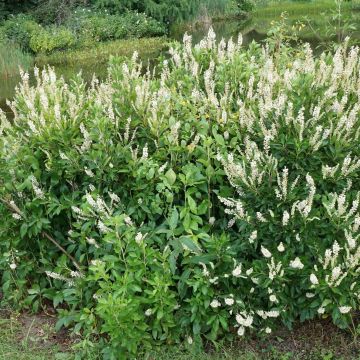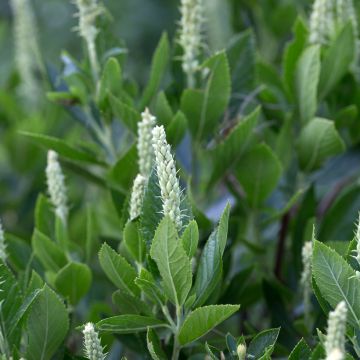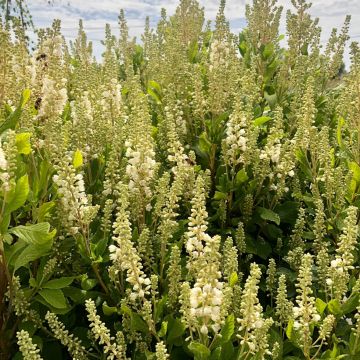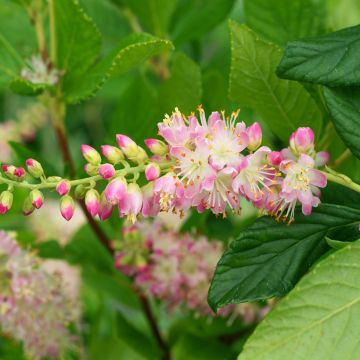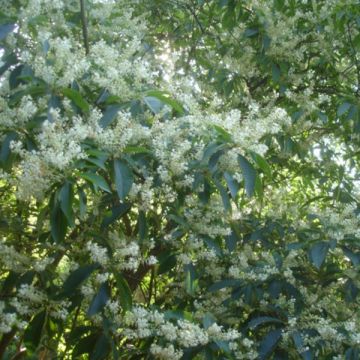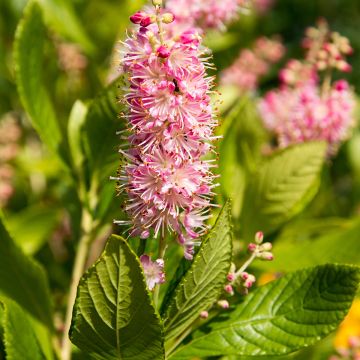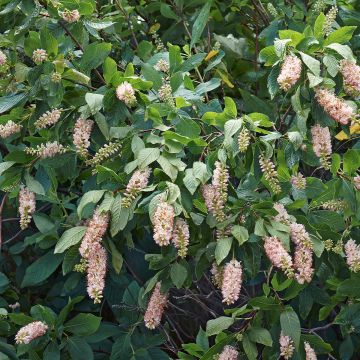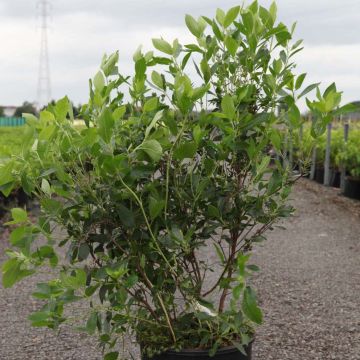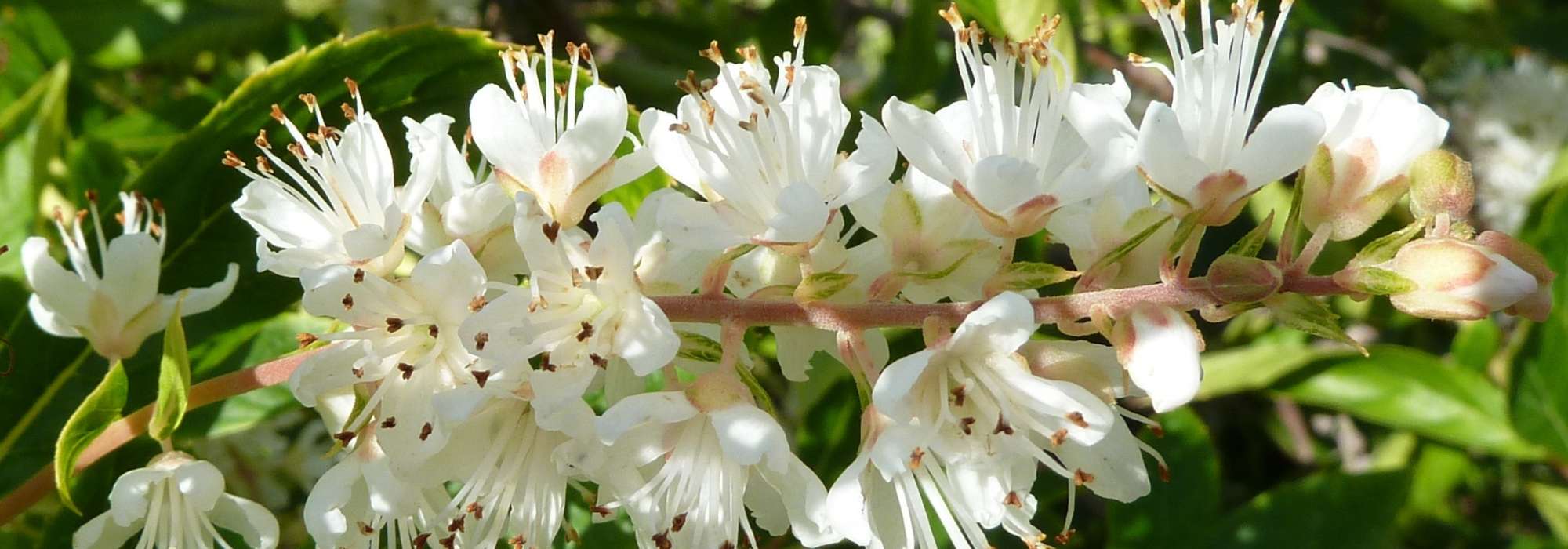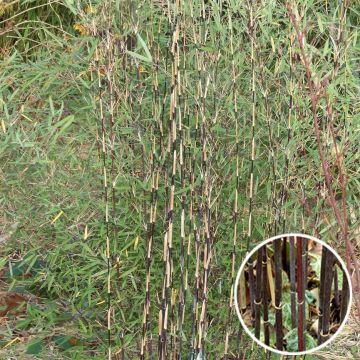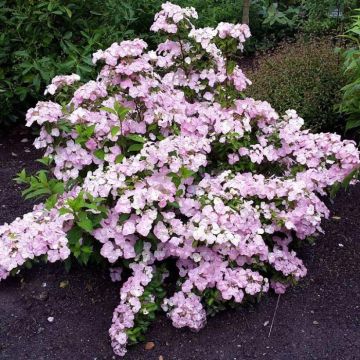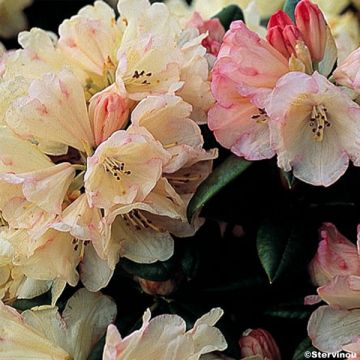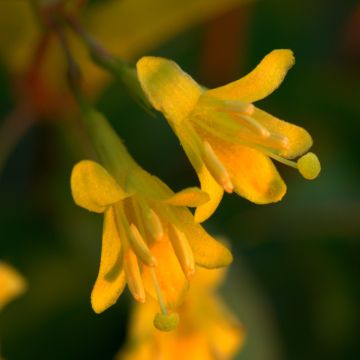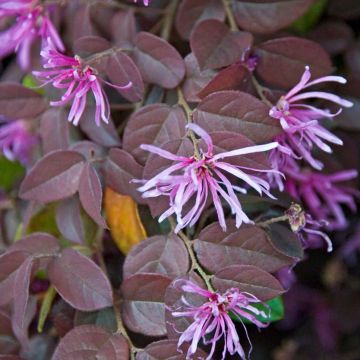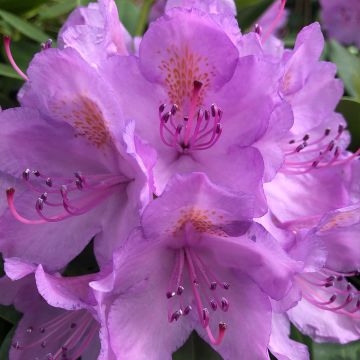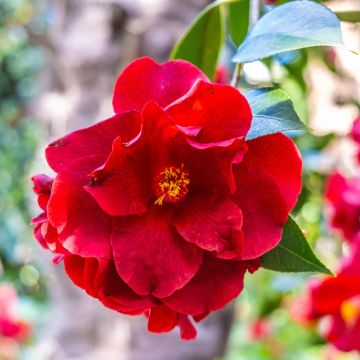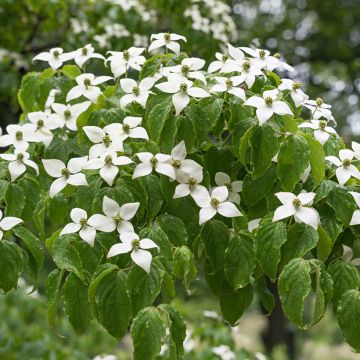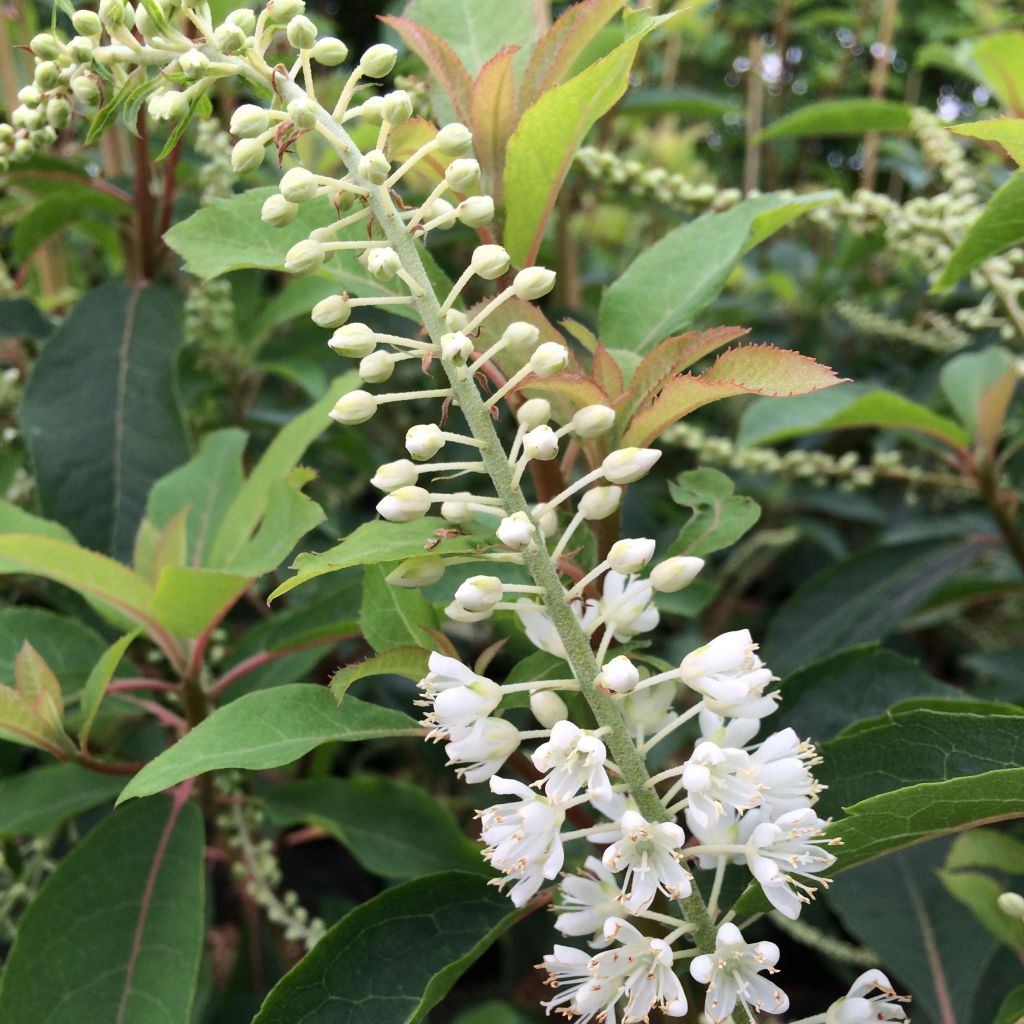

Clethra barbinervis Great Star Minbarb
Clethra barbinervis Great Star Minbarb
Clethra barbinervis Great Star Minbarb
Japanese Clethra
Compliant
Vincent, 03/09/2021
Special offer!
Receive a €20 voucher for any order over €90 (excluding delivery costs, credit notes, and plastic-free options)!
1- Add your favorite plants to your cart.
2- Once you have reached €90, confirm your order (you can even choose the delivery date!).
3- As soon as your order is shipped, you will receive an email containing your voucher code, valid for 3 months (90 days).
Your voucher is unique and can only be used once, for any order with a minimum value of €20, excluding delivery costs.
Can be combined with other current offers, non-divisible and non-refundable.
Why not try an alternative variety in stock?
View all →This plant carries a 24 months recovery warranty
More information
We guarantee the quality of our plants for a full growing cycle, and will replace at our expense any plant that fails to recover under normal climatic and planting conditions.
Does this plant fit my garden?
Set up your Plantfit profile →
Description
The Clethra barbinervis Great Star is a variety of Clethra that will seduce with its spreading habit, the beauty of its bark, its autumn colours, and its very long white and wispy summer flowering, both honey-scented and fragrant. This large bush enlivens large heathland areas from spring to autumn, as well as slightly shaded areas of the garden. Clethra are shrubs that prefer humus-rich, non-chalky, moist to wet soils. They appreciate the same environments as rhododendrons and autumn camellias, and form very beautiful combinations together.
Clethra barbinervis is a deciduous shrub native to Korea, introduced to Japan and China, where it grows in open woodlands, in thick and moist humus, on non-chalky soil. It is a very cold-resistant species (-18°C (-0.4 °F)) that can reach 3 to 4 m (9 ft 10 in to 13 ft 1 in) in all directions, depending on the growing conditions. The species name barbinervis means "with bearded veins" and refers to its veins covered with small hairs.
The cultivar 'Great Star' was selected by Minier nurseries at the Vastérival Garden (1976) for its magnificent colours. The bush has a bushy and dense habit, almost as wide as it is tall. Its smooth, orange-coloured bark peels off with age, revealing yellow ochre-colored patches. From spring onwards, the branches bear lanceolate leaves, strongly veined, toothed at the edges, slightly rough, measuring about 12-15 cm (4.7-5.9 in) in length. The leaves are bright green in spring and summer, gradually turning yellow and then red in autumn before falling. Flowering takes place in mid-summer, from July to September, and remains decorative for several weeks. At the axils of the leaves, located towards the ends of the branches, slightly trailing flower heads form, measuring 5 to 15 cm (2 to 5.9 in) in length, composed of a myriad of tiny bell-shaped white flowers with prominent stamens, which open from the base of the spike towards the top. Their sweet fragrance has a pleasant note of green apple, and it diffuses several metres around. After pollination, decorative fruits form that remain on the branches for a long time in winter.
The Clethra barbinervis Great Star, with its Japanese-like appearance, is ideal in the back of a border, or in a free hedge, where it will blend perfectly with Photinias, Forthysias, Pieris, etc. It thrives in light, non-chalky soils, never drying out, in a semi-shaded, bright but not scorching position. It finds its place in heathland areas or in front of large deciduous trees, if the soil remains moist in summer. Combine it with large rhododendrons with mauve, white, or pink flowers, camellias, Kalmia latifolia, and winter-flowering heathers that will take over after its flowering. As it tolerates container cultivation, use it also to decorate a terrace or patio.
Clethra barbinervis Great Star Minbarb in pictures


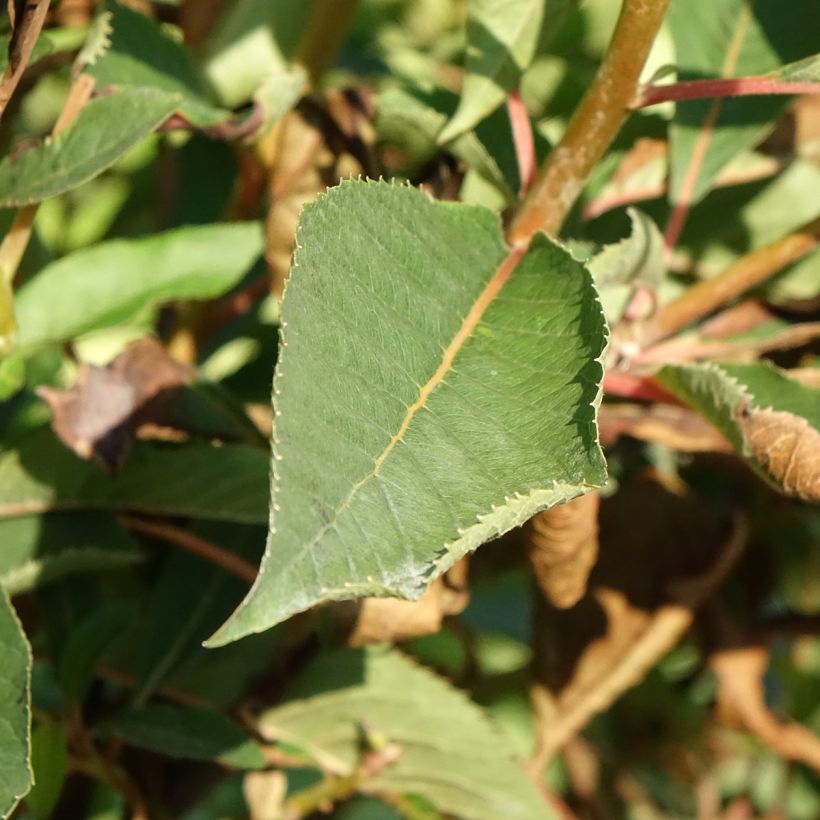

Plant habit
Flowering
Foliage
Botanical data
Clethra
barbinervis
Great Star Minbarb
Clethraceae
Japanese Clethra
Cultivar or hybrid
Planting and care
The Clethra barbinervis Great Star, hardy up to -18°C (-0.4 °F), is preferably planted in spring, in a soil that remains moist throughout the year, light, well-drained, acidic and rich in humus, in a gently sunny or semi-shaded position, very bright but not scorching. The addition of leaf mould, well-rotted compost and potting soil at planting is necessary. Growing in pure ericaceous soil is also accepted, but it should be enriched with compost. This bush does not tolerate limestone, drought or heatwaves. Remove faded flowers and, in winter, prune old stems. It is naturally resistant to diseases and parasites.
Planting period
Intended location
Care
Planting & care advice
-
, onOrder confirmed
Reply from on Promesse de fleurs
Similar products
Haven't found what you were looking for?
Hardiness is the lowest winter temperature a plant can endure without suffering serious damage or even dying. However, hardiness is affected by location (a sheltered area, such as a patio), protection (winter cover) and soil type (hardiness is improved by well-drained soil).

Photo Sharing Terms & Conditions
In order to encourage gardeners to interact and share their experiences, Promesse de fleurs offers various media enabling content to be uploaded onto its Site - in particular via the ‘Photo sharing’ module.
The User agrees to refrain from:
- Posting any content that is illegal, prejudicial, insulting, racist, inciteful to hatred, revisionist, contrary to public decency, that infringes on privacy or on the privacy rights of third parties, in particular the publicity rights of persons and goods, intellectual property rights, or the right to privacy.
- Submitting content on behalf of a third party;
- Impersonate the identity of a third party and/or publish any personal information about a third party;
In general, the User undertakes to refrain from any unethical behaviour.
All Content (in particular text, comments, files, images, photos, videos, creative works, etc.), which may be subject to property or intellectual property rights, image or other private rights, shall remain the property of the User, subject to the limited rights granted by the terms of the licence granted by Promesse de fleurs as stated below. Users are at liberty to publish or not to publish such Content on the Site, notably via the ‘Photo Sharing’ facility, and accept that this Content shall be made public and freely accessible, notably on the Internet.
Users further acknowledge, undertake to have ,and guarantee that they hold all necessary rights and permissions to publish such material on the Site, in particular with regard to the legislation in force pertaining to any privacy, property, intellectual property, image, or contractual rights, or rights of any other nature. By publishing such Content on the Site, Users acknowledge accepting full liability as publishers of the Content within the meaning of the law, and grant Promesse de fleurs, free of charge, an inclusive, worldwide licence for the said Content for the entire duration of its publication, including all reproduction, representation, up/downloading, displaying, performing, transmission, and storage rights.
Users also grant permission for their name to be linked to the Content and accept that this link may not always be made available.
By engaging in posting material, Users consent to their Content becoming automatically accessible on the Internet, in particular on other sites and/or blogs and/or web pages of the Promesse de fleurs site, including in particular social pages and the Promesse de fleurs catalogue.
Users may secure the removal of entrusted content free of charge by issuing a simple request via our contact form.
The flowering period indicated on our website applies to countries and regions located in USDA zone 8 (France, the United Kingdom, Ireland, the Netherlands, etc.)
It will vary according to where you live:
- In zones 9 to 10 (Italy, Spain, Greece, etc.), flowering will occur about 2 to 4 weeks earlier.
- In zones 6 to 7 (Germany, Poland, Slovenia, and lower mountainous regions), flowering will be delayed by 2 to 3 weeks.
- In zone 5 (Central Europe, Scandinavia), blooming will be delayed by 3 to 5 weeks.
In temperate climates, pruning of spring-flowering shrubs (forsythia, spireas, etc.) should be done just after flowering.
Pruning of summer-flowering shrubs (Indian Lilac, Perovskia, etc.) can be done in winter or spring.
In cold regions as well as with frost-sensitive plants, avoid pruning too early when severe frosts may still occur.
The planting period indicated on our website applies to countries and regions located in USDA zone 8 (France, United Kingdom, Ireland, Netherlands).
It will vary according to where you live:
- In Mediterranean zones (Marseille, Madrid, Milan, etc.), autumn and winter are the best planting periods.
- In continental zones (Strasbourg, Munich, Vienna, etc.), delay planting by 2 to 3 weeks in spring and bring it forward by 2 to 4 weeks in autumn.
- In mountainous regions (the Alps, Pyrenees, Carpathians, etc.), it is best to plant in late spring (May-June) or late summer (August-September).
The harvesting period indicated on our website applies to countries and regions in USDA zone 8 (France, England, Ireland, the Netherlands).
In colder areas (Scandinavia, Poland, Austria...) fruit and vegetable harvests are likely to be delayed by 3-4 weeks.
In warmer areas (Italy, Spain, Greece, etc.), harvesting will probably take place earlier, depending on weather conditions.
The sowing periods indicated on our website apply to countries and regions within USDA Zone 8 (France, UK, Ireland, Netherlands).
In colder areas (Scandinavia, Poland, Austria...), delay any outdoor sowing by 3-4 weeks, or sow under glass.
In warmer climes (Italy, Spain, Greece, etc.), bring outdoor sowing forward by a few weeks.






























